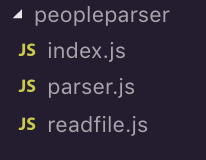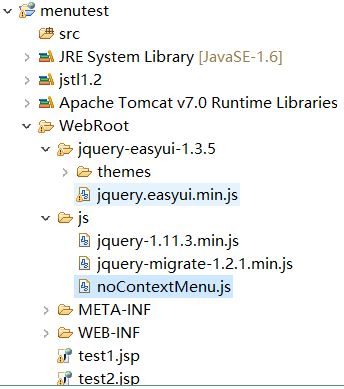
我们通过一些代码来检查JavaScript编程中FP和OOP的差异。一位同事问我有关函数式编程的代码组织形式。他正在使用Node与一群Java开发人员合作一个AWS Lambda项目,他们使用相同类型的类、各种设计模式以及其他面向对象编程的组织代码方式。他想知道,如果他们在函数式编程中仅使用纯函数,那么他们应该如何组织呢?
面向对象编程的方式
我感触最深的一点就是,每个人的代码组织形式都不一样。在不同的语言之间,唯一公认的实践就是要有一个公共的接口用来测试。公共接口指的是针对内部细节进行大量抽象的接口。它可以是类的公有方法、也可以是Facade或Factory设计模式,也可以是模块中的函数。这三者都会使用许多内部函数,但只会公开一个调用的函数。有时这种做法可以确保在添加功能和修复bug后,消费者在更新到最新代码时无需更改代码。当然,副作用仍然会对此产生负面影响。
单一类模块
可以说,至少在Node中,面向对象的方式通常包含两个基本设计模式。第一种方法是创建一个类,然后作为默认导出公开:
//CommonJS
classSomeThing{...}
module.exports=SomeThing
//ES6
classSomeThing{...}
exportdefaultSomeThing导出多个东西
第二种方法是从同一模块中公开许多东西,包括类、函数、事件变量等:
//CommonJS
classSomeThing{...}
constutilFunction=()=>...
constCONFIGURATION_VAR=...
module.exports={
SomeThing,
utilFunction,
CONFIGURATION_VAR
}
//ES6
exportclassSomeThing{...}
exportconstutilFunction=()=>...
exportconstCONFIGURATION_VAR=...而在这两种导出代码的基本方法之外,情况就会因各个项目以及各个团队而异了。有些项目或团队会使用不同的框架,例如使用Express与使用Nest的团队的代码截然不同。即使使用同一个Express框架,两个团队的使用方式也有所不同。有时,同一个团队在新项目中组织Express的方式也不一定与以往的项目相同。
函数式编程的方式
函数式编程组织代码的方式,至少在Node中,也有两种模式。
导出一个函数
第二种方式是从一个模块中导出一个函数:
//CommonJS constutilFunction=()=>... module.exports=utilFunction //ES6 constutilFunction=()=>... exportdefaultutilFunction
导出多个函数
第二种方式是从一个模块中导出多个函数:
//CommonJS
constutilFunction=()=>...
constanotherHelper=()=>...
module.exports={
utilFunction,
anotherHelper
}
//ES6
exportconstutilFunction=()=>...
exportconstanotherHelper=()=>...变量?
有些人们会把变量与函数用同样的方式导出,而有些更喜欢纯函数的人或者倡导延迟计算的人会导出函数:
//pragmatic exportCONFIGURATION_THING='somevalue' //purist exportconfigurationThing=()=>'somevalue'
示例
我们针对上述代码创建几个示例,向你演示如何使用单个和多个导出。我们将为面向对象和函数式编程构建一个公共的接口,并暂且忽略两者的副作用(即HTTP调用),假设单元测试将使用这个公共接口来调用内部的私有方法。两者都将加载并解析同一个文本。
这两个示例都将解析以下JSON字符串:
[
{
"firstName":"jesse",
"lastName":"warden",
"type":"Human"
},
{
"firstName":"albus",
"lastName":"dumbledog",
"type":"Dog"
},
{
"firstName":"brandy",
"lastName":"fortune",
"type":"Human"
}
]示例:面向对象编程
我们需要三个类:一个类通过默认编码读取文件,一个类负责解析文件的类,一个单例类将它们组合到一个公共接口。
readfile.js
首先,这段读文件的代码实现了将文件读取到Promise中,支持可选的编码参数:
//readfile.js
importfsfrom'fs'
import{EventEmitter}from'events'
classReadFile{
readFile(filename,encoding=DEFAULT_ENCODING){
returnnewPromise(function(success,failure){
fs.readFile(filename,encoding,function(error,data){
if(error){
failure(error)
return
}
success(data)
})
})
}
}
exportDEFAULT_ENCODING='utf8'
exportReadFileparser.js
接下来,我们需要一个解析器类,从读取文件中获取原始的String数据,并解析到Array中:
// parser.js
import { startCase } from 'lodash'
class ParseFile {
#fileData
#names
get names() {
return this.#names
}
constructor(data) {
this.#fileData = data
}
parseFileContents() {
let people = JSON.parse(this.#fileData)
this.#names = []
let p
for(p = 0; p < people.length; p++) {
const person = people[p]
if(person.type === 'Human') {
const name = this._personToName(person)
names.push(name)
}
}
}
_personToName(person) {
const name = `${person.firstName} ${person.lastName}`
return startCase(name)
}
}
export default ParseFileindex.js
最后,我们需要一个单例将它们组合成一个静态的方法:
// index.js
import ParseFile from './parsefile'
import { ReadFile, DEFAULT_ENCODING } from './readfile'
class PeopleParser {
static async getPeople() {
try {
const reader = new ReadFile()
const fileData = await reader.readFile('people.txt', DEFAULT_ENCODING)
const parser = new ParseFile(data)
parser.parseFileContents()
return parser.names
} catch(error) {
console.error(error)
}
}
}
export default PeopleParser调用PeopleParser的静态方法
调用方式如下:
importPeopleParserfrom'./peopleparser' PeopleParser.getPeople() .then(console.log) .catch(console.error)
最后的文件夹结构如下:

你可以使用文件系统对PeopleParser进行单元测试。
示例:函数式编程
对于函数式编程的示例,你可以参考这篇文章链接
默认编码的函数:
exportconstgetDefaultEncoding=()=> 'utf8'
读取文件的函数
const readFile = fsModule => encoding => filename => new Promise((success, failure) => fsModule.readFile(filename, encoding, (error, data) => error ? failure(error) : success(data) )
解析文件的函数
const parseFile = data =>
new Promise((success, failure) => {
try {
const result = JSON.parse(data)
return result
} catch(error) {
return error
}
})从People对象中过滤Human的函数
constfilterHumans=peeps=> peeps.filter( person=> person.type==='Human' )
从列表的Human中格式化字符串名称的函数
constformatNames=humans=>
humans.map(
human=>
`\${human.firstName}\${human.lastName}`
)从列表中修正名称大小写以及映射的函数
conststartCaseNames=names=> names.map(startCase)
提供公共接口的函数
exportconstgetPeople=fsModule=>encoding=>filename=> readFile(fsModule)(encoding)(filename) .then(parseFile) .then(filterHumans) .then(formatNames) .then(startCaseNames)
调用getPeople
调用该函数的方式如下所示:
importfsfrom'fs'
import{getPeople,getDefaultEncoding}from'./peopleparser'
getPeople(fs)(getDefaultEncoding())('people.txt')
.then(console.log)
.catch(console.error)最后文件夹结构如下:

最后,你可以使用fs的桩测试getPeople。
总结
如上所示,无论是面向对象编程还是函数式编程,你都可以使用CommonJS和ES6的方式实现默认导出,也可以实现多重导出。只要你导出的是隐藏实现细节的公共接口,那么就可以确保在更新时不会破坏使用代码的人,而且还可以确保在更改私有类方法/函数中的实现细节时,无需重构一堆单元测试。
尽管本文中的函数式编程的示例比面向对象的代码少,但是请不要误解,函数式编程中也可以包含很多函数,而且你可以使用相同的方式——从一个模块/文件或一系列函数中导出一个函数。通常,你可以将文件夹中的index.js作为实际导出的公共接口。








网友评论文明上网理性发言 已有0人参与
发表评论: